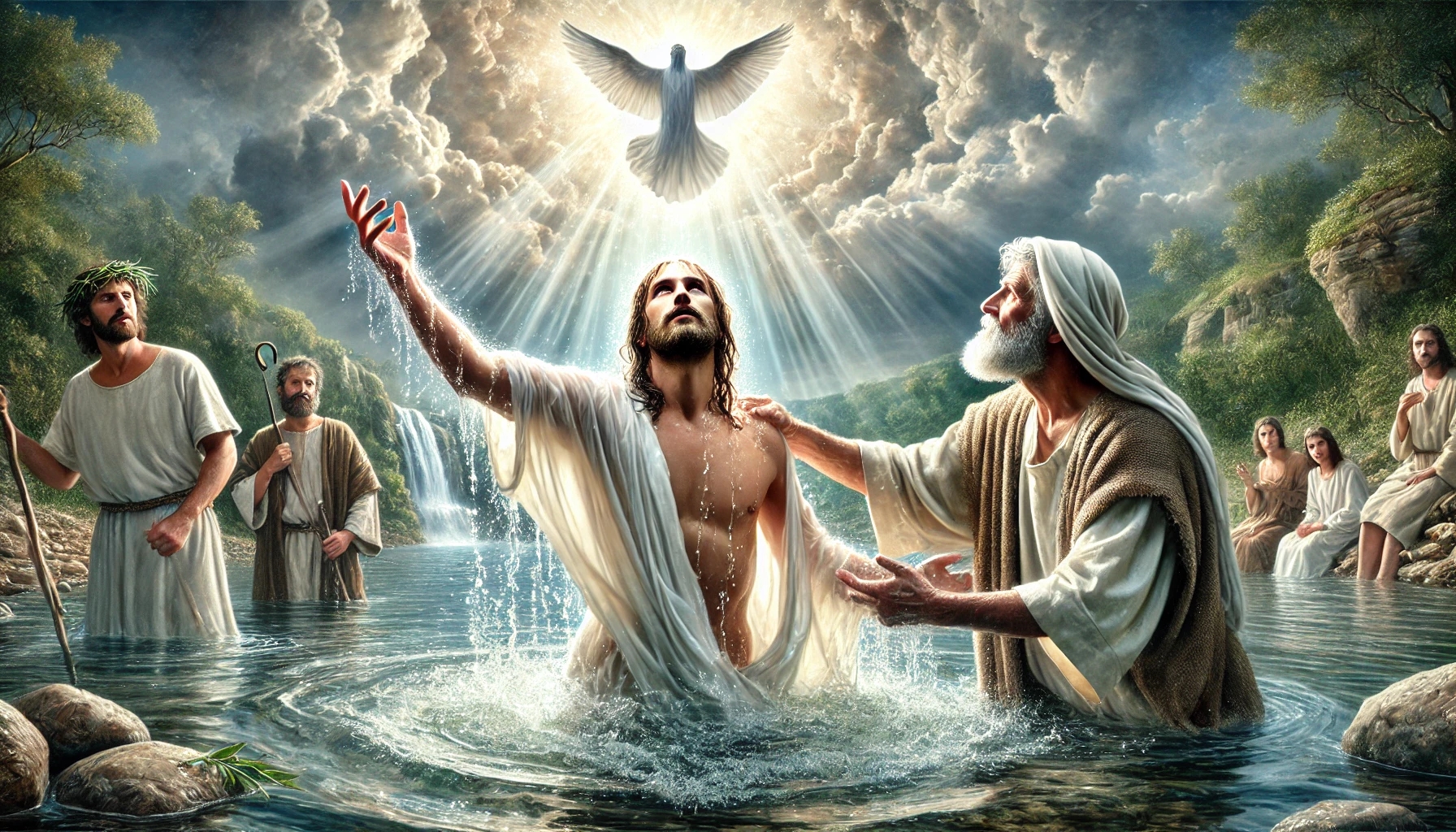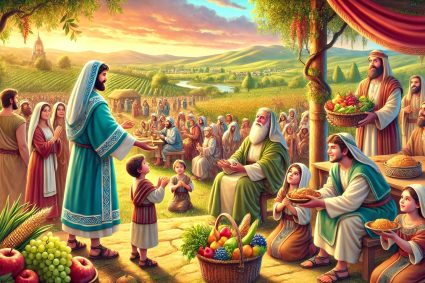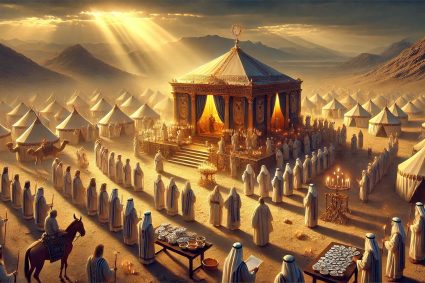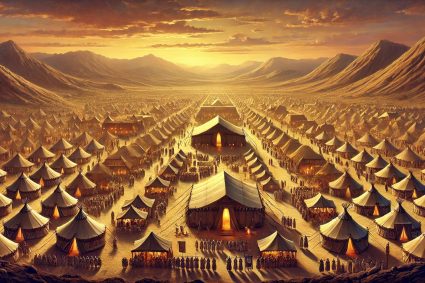The Message of the Book of Mark
The Gospel of Mark is the shortest of the four Gospels and is often described as the most dynamic and vivid. The central message of the Gospel according to Mark is the proclamation of the Kingdom of God through the actions and teachings of Jesus Christ. It emphasizes Jesus’ identity as the Messiah and the Son of God, who brings salvation through His life, death, and resurrection.
Here are some key themes and messages of the Gospel of Mark:
The Coming of the Kingdom of God: Mark begins his Gospel with the announcement that the Kingdom of God is near and calls for repentance. Throughout the Gospel, it is shown how Jesus establishes the Kingdom of God through His deeds and words.
The Identity of Jesus: A recurring theme in the Gospel of Mark is the question of Jesus’ true identity. Throughout His mission, Mark reveals Jesus as the Messiah and the Son of God, both through His power over nature, illness, and demons, and through His teachings.
The Messianic Secret: In the Gospel of Mark, the “Messianic Secret” is an important theme. Jesus often asks those who witness His miracles or recognize His identity to keep it secret. This may suggest that the full understanding of His Messiahship is to be revealed only after His death and resurrection.
Suffering and the Cross: Mark places a strong emphasis on the suffering and death of Jesus. He portrays Jesus not only as a powerful teacher and miracle worker but also as the suffering Messiah, whose death on the cross is central to salvation. This is the focal point of the Gospel and is presented as the path to true life.
Discipleship: Mark sets high demands for following Jesus. The disciples are called to take up their own crosses and follow Jesus, which often means enduring suffering and persecution.
Faith and Unbelief: The Gospel emphasizes the importance of faith in response to Jesus and His message. Faith is depicted as a necessary attitude to experience the power of God, while unbelief often leads to misunderstanding and rejection.
The Resurrection: The Gospel of Mark ends with the empty tomb and the announcement that Jesus has risen from the dead. Although the Gospel ends abruptly, the message of the resurrection remains central to Christian hope.
Overall, the Gospel of Mark portrays Jesus as the suffering Messiah whose path of the cross and resurrection leads humanity to redemption. It calls readers to follow this path of faith and discipleship and to proclaim the arrival of the Kingdom of God.
August 28, 2024
DAILY BIBLE READING – Mark Chapter 1
1 The beginning of the gospel of Jesus Christ, the Son of God;
2 As it is written in the prophets, Behold, I send my messenger before thy face, which shall prepare thy way before thee.
3 The voice of one crying in the wilderness, Prepare ye the way of the Lord, make his paths straight.
4 John did baptize in the wilderness, and preach the baptism of repentance for the remission of sins.
5 And there went out unto him all the land of Judaea, and they of Jerusalem, and were all baptized of him in the river of Jordan, confessing their sins.
6 And John was clothed with camel’s hair, and with a girdle of a skin about his loins; and he did eat locusts and wild honey;
7 And preached, saying, There cometh one mightier than I after me, the latchet of whose shoes I am not worthy to stoop down and unloose.
8 I indeed have baptized you with water: but he shall baptize you with the Holy Ghost.
9 And it came to pass in those days, that Jesus came from Nazareth of Galilee, and was baptized of John in Jordan.
10 And straightway coming up out of the water, he saw the heavens opened, and the Spirit like a dove descending upon him:
11 And there came a voice from heaven, saying, Thou art my beloved Son, in whom I am well pleased.
12 And immediately the spirit driveth him into the wilderness.
13 And he was there in the wilderness forty days, tempted of Satan; and was with the wild beasts; and the angels ministered unto him.
14 Now after that John was put in prison, Jesus came into Galilee, preaching the gospel of the kingdom of God,
15 And saying, The time is fulfilled, and the kingdom of God is at hand: repent ye, and believe the gospel.
16 Now as he walked by the sea of Galilee, he saw Simon and Andrew his brother casting a net into the sea: for they were fishers.
17 And Jesus said unto them, Come ye after me, and I will make you to become fishers of men.
18 And straightway they forsook their nets, and followed him.
19 And when he had gone a little farther thence, he saw James the son of Zebedee, and John his brother, who also were in the ship mending their nets.
20 And straightway he called them: and they left their father Zebedee in the ship with the hired servants, and went after him.
21 And they went into Capernaum; and straightway on the sabbath day he entered into the synagogue, and taught.
22 And they were astonished at his doctrine: for he taught them as one that had authority, and not as the scribes.
23 And there was in their synagogue a man with an unclean spirit; and he cried out,
24 Saying, Let us alone; what have we to do with thee, thou Jesus of Nazareth? art thou come to destroy us? I know thee who thou art, the Holy One of God.
25 And Jesus rebuked him, saying, Hold thy peace, and come out of him.
26 And when the unclean spirit had torn him, and cried with a loud voice, he came out of him.
27 And they were all amazed, insomuch that they questioned among themselves, saying, What thing is this? what new doctrine is this? for with authority commandeth he even the unclean spirits, and they do obey him.
28 And immediately his fame spread abroad throughout all the region round about Galilee.
29 And forthwith, when they were come out of the synagogue, they entered into the house of Simon and Andrew, with James and John.
30 But Simon’s wife’s mother lay sick of a fever, and anon they tell him of her.
31 And he came and took her by the hand, and lifted her up; and immediately the fever left her, and she ministered unto them.
32 And at even, when the sun did set, they brought unto him all that were diseased, and them that were possessed with devils.
33 And all the city was gathered together at the door.
34 And he healed many that were sick of divers diseases, and cast out many devils; and suffered not the devils to speak, because they knew him.
35 And in the morning, rising up a great while before day, he went out, and departed into a solitary place, and there prayed.
36 And Simon and they that were with him followed after him.
37 And when they had found him, they said unto him, All men seek for thee.
38 And he said unto them, Let us go into the next towns, that I may preach there also: for therefore came I forth.
39 And he preached in their synagogues throughout all Galilee, and cast out devils.
40 And there came a leper to him, beseeching him, and kneeling down to him, and saying unto him, If thou wilt, thou canst make me clean.
41 And Jesus, moved with compassion, put forth his hand, and touched him, and saith unto him, I will; be thou clean.
42 And as soon as he had spoken, immediately the leprosy departed from him, and he was cleansed.
43 And he straitly charged him, and forthwith sent him away;
44 And saith unto him, See thou say nothing to any man: but go thy way, shew thyself to the priest, and offer for thy cleansing those things which Moses commanded, for a testimony unto them.
45 But he went out, and began to publish it much, and to blaze abroad the matter, insomuch that Jesus could no more openly enter into the city, but was without in desert places: and they came to him from every quarter.
King James Version. Public Domain
Commentary
Introduction:
The first chapter of the Gospel of Mark opens the narrative of Jesus Christ with a dynamic and powerful portrayal of the early events of His public ministry. From the announcement by John the Baptist to the initial healings and teachings of Jesus, Mark provides a vivid and direct insight into the beginnings of Jesus’ mission. This chapter sets the foundation for understanding Jesus’ divine authority and His role as the promised Messiah.
Commentary:
The first chapter of the Gospel of Mark introduces Jesus as the promised Messiah and the Son of God, whose actions herald the coming of the Kingdom of God. The narrative begins with John the Baptist preaching in the wilderness as the forerunner of the Messiah, calling people to repentance and baptism. John’s appearance and message align with the Old Testament prophecy that a precursor will prepare the way of the Lord. John emphasizes the superiority of the coming Messiah by stating that he baptizes only with water, while the Messiah will baptize with the Holy Spirit.
Jesus’ baptism by John is a pivotal moment, accompanied by divine confirmation. The heavens open, the Holy Spirit descends upon Jesus in the form of a dove, and a voice from heaven declares, “You are my beloved Son, in whom I am well pleased.” This scene affirms Jesus’ divine sonship and His special relationship with God.
Following His baptism, Jesus is led by the Spirit into the wilderness, where He is tempted by Satan for forty days. This temptation symbolizes the spiritual battle Jesus undertakes for humanity. At the same time, it emphasizes His sinlessness and steadfastness in the face of evil.
Beginning His ministry in Galilee, Jesus preaches the Gospel of the Kingdom of God, calling for repentance and faith in the good news. His message is accompanied by powerful signs and wonders that confirm His divine authority. The calling of the first disciples, who respond immediately to His invitation, demonstrates the irresistible attraction of Jesus and the radical commitment He demands from His followers.
In Capernaum, Jesus shows His teaching authority, which stands in clear contrast to that of the scribes. He heals the sick, casts out demons, and reveals Himself as the Holy One of God. These actions lead to growing fame but also to confrontations with religious authorities.
Notably, the healing of the leper at the end of the chapter illustrates not only Jesus’ compassion and His power over illness but also His willingness to break cultural and religious barriers. The leper is not only physically healed but also reintegrated into the community.
Summary:
Mark 1 lays the groundwork for the entire Gospel by presenting Jesus as the Son of God and the promised Messiah who proclaims the Kingdom of God. The chapter depicts the early events of Jesus’ public ministry, from His baptism and temptation to the calling of the first disciples and the initial healings and exorcisms. It portrays Jesus as a powerful teacher and healer, whose divine authority is evident in His words and actions, while also highlighting the radical commitment expected from His followers.


WEEKLY SPIRIT OF PROPHECY READING – Ellen White | The Desire of Ages Chapter 58—“Lazarus, Come Forth”
This chapter is based on Luke 10:38-42; John 11:1-44.
Read online here
Commentary
The chapter “Lazarus, Come Fourth” describes one of the most powerful and symbolic episodes in the ministry of Jesus. The raising of Lazarus from the dead is not only a remarkable miracle but also a profound testament to Jesus’ divine authority and love for his friends. This chapter uniquely brings together faith, hope, and the nature of divine providence.
Lazarus and the Family in Bethany:
Lazarus, along with his sisters Mary and Martha, are among Jesus’ most devoted followers. The close bond between them and Jesus goes far beyond what one would expect in a mere teacher-student relationship. The house in Bethany, home to Lazarus and his sisters, often serves as a refuge for Jesus, a place of peace and friendship where he can rest from the demands of his public ministry. This deep emotional connection becomes particularly evident when Lazarus falls ill and eventually dies.
Jesus’ Reaction to Lazarus’ Death:
Interestingly, Jesus hesitates to go to Bethany upon hearing of Lazarus’ illness. This delay initially seems puzzling, especially to the disciples who are aware of Jesus’ deep affection for Lazarus and his family. However, Jesus’ delay is intentional and serves a greater purpose: the glorification of God and the strengthening of his disciples’ faith. Jesus knows that the forthcoming miracle, the resurrection of Lazarus, will provide a powerful demonstration of his divine power and his identity as the Messiah.
The Dialogue with Martha and Mary:
When Jesus finally arrives in Bethany, he is greeted by Martha, who affirms her faith in him but is still sorrowful over her brother’s death. Jesus uses this moment to strengthen both Martha’s and Mary’s faith by telling them that he himself is “the resurrection and the life.” These words are central, as they not only point to the imminent resurrection of Lazarus but also to the deeper truth that Jesus embodies eternal life itself.
The Raising of Lazarus:
The climax of the chapter is undoubtedly the scene where Jesus calls Lazarus out of the tomb. This act is so powerful and majestic that it dispels any doubts about Jesus’ divine nature. The miracle is a symbolic act that foreshadows the future resurrection of all believers and demonstrates Jesus’ sovereignty over life and death. The reaction of those present—a mixture of astonishment, joy, and gratitude—highlights the profound emotional and spiritual impact of this miracle.
Significance for Faith:
The raising of Lazarus is not only a physical miracle but also a spiritual sign. It shows that faith in Jesus offers a living hope for eternal life, a hope that extends beyond death. Jesus demonstrates that death does not have the final word, but that through him, life triumphs. For the disciples and all who witness this event, it becomes clear that Jesus is indeed the Son of God, who has come to establish the Kingdom of God on earth.
The Deep Humanity of Jesus:
What is particularly moving is the portrayal of Jesus’ deep compassion. Although he knows that he will raise Lazarus from the dead, he weeps with those who mourn. These tears reveal Jesus’ full humanity and his capacity to experience genuine pain and loss. It presents a picture of Jesus that brings him closer to us: the divine Savior who is fully human, suffering with us and understanding our suffering.
Conclusion:
The chapter “Lazarus, Come Fourth” illustrates that Jesus’ actions and words are always directed toward a deeper, divine purpose—revealing his nature and mission to bring life that transcends death. The resurrection of Lazarus is a precursor to the final resurrection and a powerful symbol of the victory of life over death. It reminds us that in times of suffering and darkness, faith in Christ can lead us to a new life that surpasses our current reality.
(Visited 17 times, 1 visits today)
Post Views: 613

![]()





















